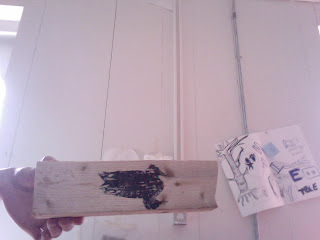There were many obstacles that I was worried I would hit such as wasting to much time, not being able to think of a solid idea, and being confident about what my final product is. To be honest, I did hit some of these obstacles, but with the help of everyone around me and time, I managed to wiggle through them.
When I first sat down at my studio in the back room, I had way too many ideas going through my head that I couldn't possibly organize. I felt like I was sitting in a room with 9 amazing and experienced confident painters/artists, and that I had a lot to live up to. It took most of the term and several different blog posts to realize that everyone is individually on their own boat, including me and that even if I don't classify myself as a painter, there are many other art skills I have and can use.
I'm happy I got the chance to see and feel what it is like to be an artist in their studio with nothing telling them what to do. It was a completely different experience taking an art class without any set projects or real rules. This was both a struggle and an advantage for me. Being able to set my mind free and see what it can come up with is fascinating to me. When I hit any struggles, having group critiques helped more than I thought. I'm lucky to have experienced this class this year, and I cannot wait to share my artwork in the gallery, and to see my classmates works of art as well.



 Doodles
Doodles



